- Date
- 1st September 2019
- Categories
by Jon Leary, Agnes Kalyonge & Monica Kalyonge
The future looks bright for electric cooking in Kenya, with Jikoni Magic, Hotpoint Appliances Ltd. and KPLC combining forces to bring EPCs, induction, infrared and other efficient electric cooking solutions to the masses.
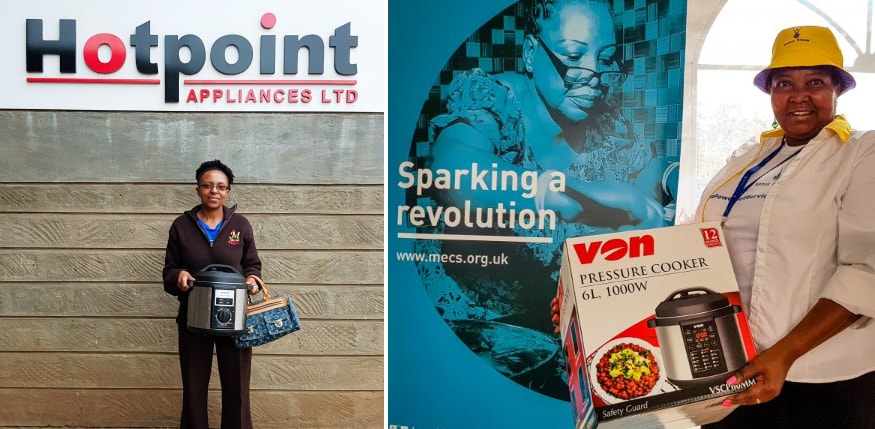
KPLC (Kenya Power and Lighting Company), Kenya’s national electricity utility, has approximately 6 million customers, yet very few of them use electricity as their primary fuel. Historically, charcoal and kerosene have been the most popular household cooking fuels in urban Kenya, however in the last decade, LPG has exploded (excuse the pun!) onto the market.
Whilst charcoal and kerosene used to be cheap, prices have shot up in recent years. In 2018, a logging ban was put in place to protect the nation’s dwindling forest reserves, causing the price of wood fuels to double overnight. The government has also pushed up kerosene prices by raising the tax, both to incentivise uptake of LPG for cooking and to prevent unscrupulous filling stations from adulterating petrol with cheaper kerosene.
Electricity remains a niche cooking fuel, with wealthier households often owning task-specific electric cooking appliances such as kettles or microwaves, but relying on LPG for the bulk of their cooking. Historically, electricity has not been promoted as a cooking fuel as it has been in short supply. However, this is no longer the case: The World Bank estimate that generating capacity in Kenya will double between 2015 and 2020 [7]. Standard Digital report that Kenya now has a total installed electricity generating capacity of approximately 2,700MW, yet the nation’s peak demand is roughly 1,859MW. As a result, Kenya now has 900MW of unutilised capacity (even after allowing for spinning reserve equal to the largest generator, approximately 600MW of power are not being consumed).
New power plants don’t come cheap, so to balance the books, KPLC’s sales and marketing team have been tasked with selling as many of these surplus electricity units as possible. This gave rise to the Pika na Power (Cook with Electricity) programme (LINK), which was broadcast on national TV and social media. Celebrities from across the nation were invited onto the show to demonstrate just how easy it is to cook delicious Kenyan meals with electric cooking appliances.
A new wave of energy-efficient electric cooking appliances are now available, meaning that the cost of cooking with electricity is now even more affordable. Until now, Pika na Power has focussed on induction and infrared stoves, both of which are significant steps forward from the simple electric hotplate. They are fast to respond to adjustments in heat levels, just like LPG, and can fry very efficiently. However, as heat is lost from the cooking pot just as fast as it is on any other stove, they still struggle with dishes that require boiling for a long time, such as beans and matumbo (tripe). As a result, many people still buy charcoal for these dishes.
The Electric Pressure Cooker (EPC) offers the ability to cook the most energy intensive foods with less than a fifth of the energy of the electric hotplate and at a fraction of the cost of any other fuel. However, the appliance is almost unheard of throughout Kenya and until now, has been almost impossible to obtain. To address this issue, the MECS programme has funded Kenyan food blogger, Jikoni Magic, to popularise EPCs and smart cooking practices using social media. Meanwhile, Hotpoint Appliances, one of Kenya’s most well known electric appliance suppliers has just started promoting their Von-branded EPC in Nairobi, so Jikoni Magic has formed a strategic alliance with them to drive forward sales of their EPC.
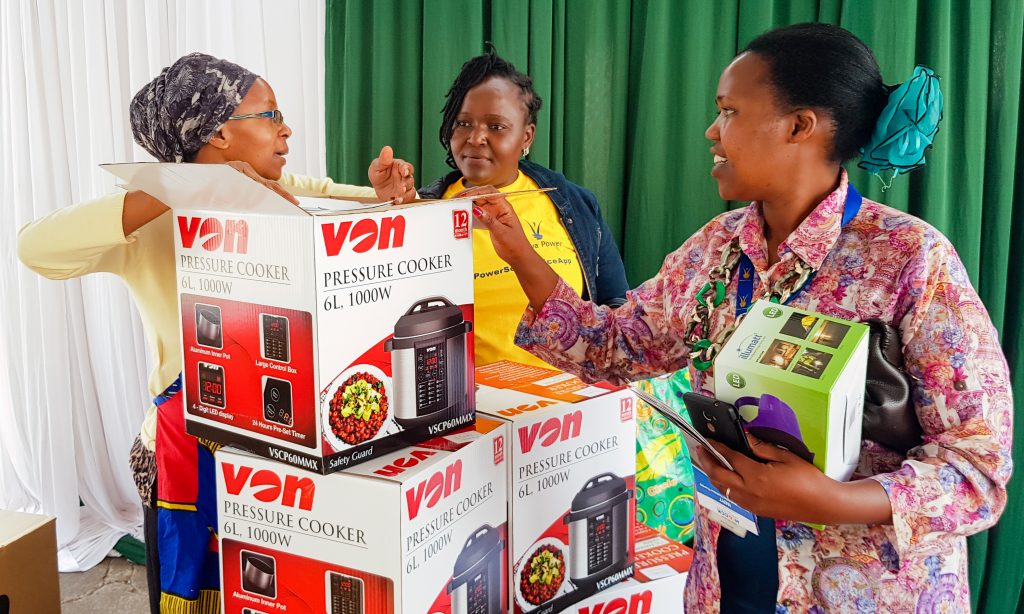
The clear synergy between our efforts to promote electric cooking in Kenya has led us to join forces with KPLC’s Pika na Power to promote a broader range of electric cooking solutions that can offer Kenyans an affordable and desirable solution to cook 100% of their food with electricity. KPLC kindly invited us to exhibit at their Open Day at KICC (Kenyatta International Convention Centre) on the 21/22 August, where Jikoni Magic cooked rice, beef stew and beans on an EPC, selling 12 units to members of the public.
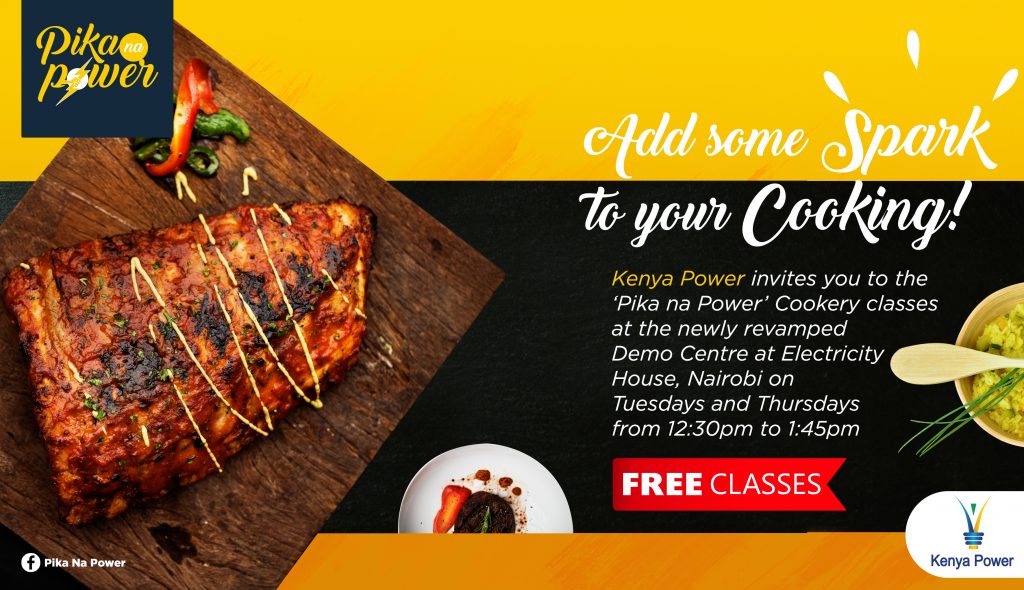
As a follow on from the Open Day, Pika na Power invited Jikoni Magic to run one of their bi-weekly cooking classes at their fully kitted out electric kitchen demonstration centre at Electricity House. Agnes Kalyonge, founder and CEO of Jikoni Magic, cooked rice and kienyeji chicken for the crowd of 40 women who were keen to learn what role this new gadget could play in their own kitchens. Kienyeji chickens usually range free in the village and have a distinctive flavour, however they usually require boiling for an hour or so to soften their rubbery flesh. Agnes wowed the crowd by using the EPC to boil the chicken for just 20 minutes, whilst still producing a deliciously tender dish for all to try.
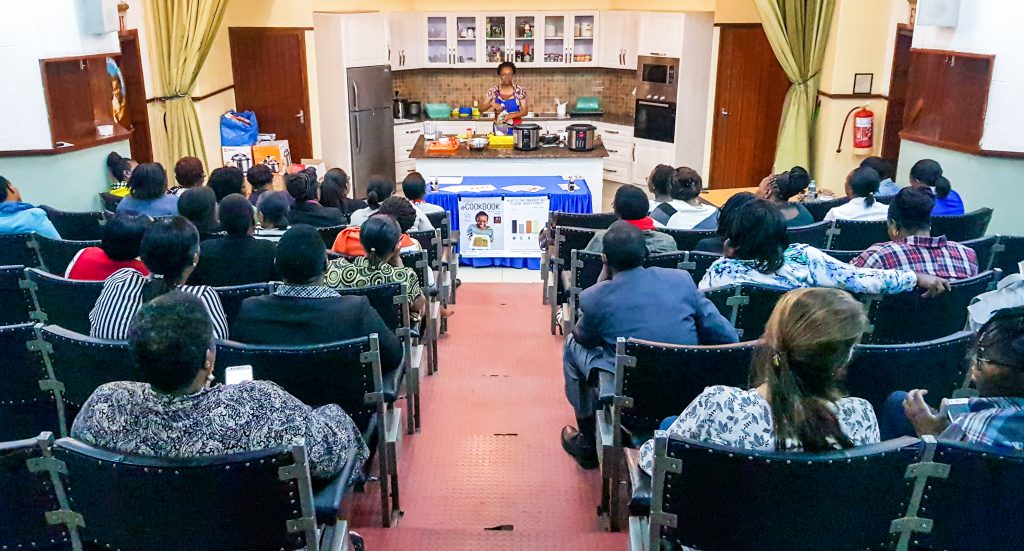
The plug in energy meters used in the cooking diaries study and the eCookBook were programmed with KPLC’s electricity tariff (averaged at 20 KSh/kWh) to allow Agnes to give a live commentary on the cost of cooking each dish. The final cost of the entire meal was just 22 KSh, however the vast majority of this went into browning the meat. The rice used just 5 KSh (0.25 kWh), whilst the kienyeji chicken used 17 KSh (0.85 kWh), of which 15 KSh (0.75 kWh) went into browning the meat! It did make for a delicious flavour though, highlighting one of the points where the cook has to decide how best to trade-off cost (i.e. energy-efficiency) with flavour.
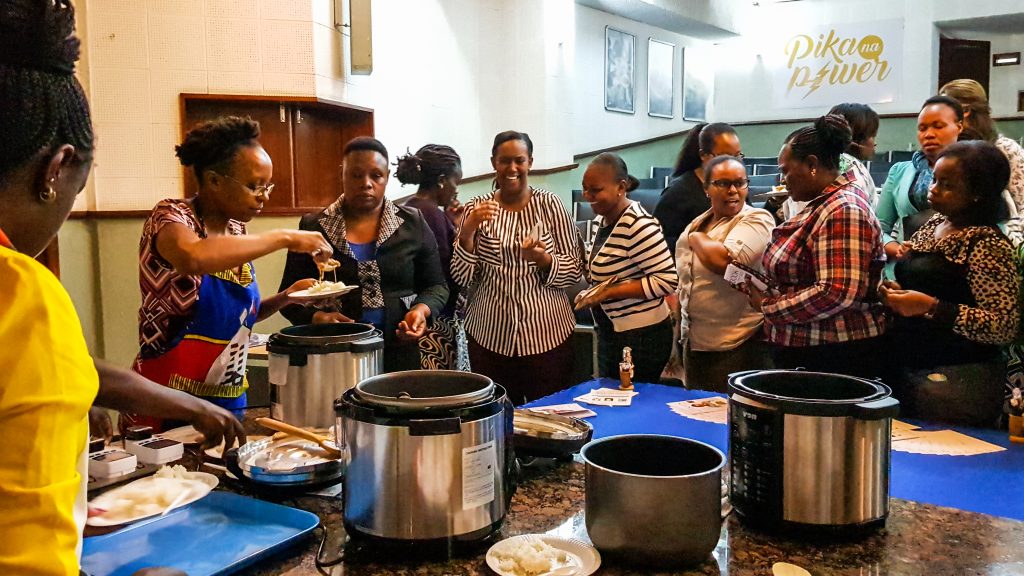
One of the key factors that drove forward sales of the induction and infrared stoves was the generous offer of KPLC to enable its employees to buy them in installments, which are automatically deducted from their salary each month. This might not sound like that big a deal, as KPLC is just one company, however, it has over 10,000 employees, so if this can be extended to EPCs, this could be just what is needed to establish the market in Kenya.